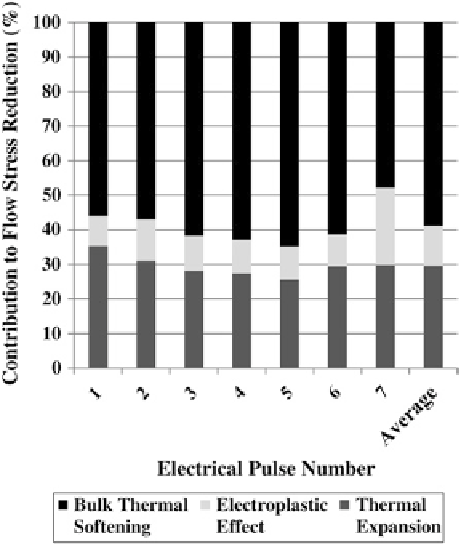Civil Engineering Reference
In-Depth Information
Fig. 6.44
Division of
thermal expansion, bulk
thermal softening, and the
electroplastic effect for EAF
contribution to the overall stress reduction. It was found that the thermal expansion
stress accounts for approximately 30 % of the total reduction. The main question is
what portion is from direct electrical effects (i.e., electroplastic effect) and from bulk
thermal softening. To answer this question, the thermal response was analyzed for
each flow stress reduction due to the applied current. Using the thermal response and
the corresponding material strain at that time, the flow stress reduction due to purely
thermal effects was calculated. The calculation was performed using a constitutive
equation that predicts the material stress response at varying temperatures for this
material. Once the stress reduction due purely to bulk thermal heating was deter-
mined, it was compared to the result in Fig.
6.43
(left). The percentage of the total
reduction was found to be approximately 60 %. Thus, including thermal expansion,
this leaves the remaining 10 % to direct electrical effects or electroplasticity. These
calculations are summarized in Fig.
6.44
. As seen, there is some variation, but the
overall trend attributes the most to bulk thermal softening and then to thermal expan-
sion. The smallest contribution is due to direct electrical effects.
6.3.5 Thermo-Mechanical Modeling Conclusions
The thermo-mechanical model introduced in this section combined the thermal
and mechanical model to predict the local material strain, flow stress, and thermal

